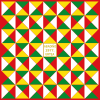Abadiño
Abadiano | |
|---|---|
 Abadiño town hall | |
| Coordinates: 43°09′09″N 2°36′27″W / 43.15250°N 2.60750°W | |
| Country | |
| Autonomous community | |
| Province | Biscay |
| Comarca | Durangaldea |
| Founded | Unknown |
| Government | |
| • Mayor | José Luis Navarro Donaire (Abadiño Independienteak) |
| Area | |
| • Total | 36.06 km2 (13.92 sq mi) |
| Elevation | 144 m (472 ft) |
| Population (2018)
[1] | |
| • Total | 7,533 |
| • Density | 210/km2 (540/sq mi) |
| Demonym | Basque: abadiñarra |
| Time zone | UTC+1 ( CET) |
| • Summer ( DST) | UTC+2 ( CEST) |
| Postal code | 48220 |
| Website | Official website |
Abadiño ( Basque: Abadiño; Spanish: Abadiano) is a town located in the province of Biscay, in the autonomous community of Basque Country, in the north of Spain, about 35 km from the provincial capital of Bilbao. The area of the municipality is about 36 km2 (13.9 sq mi) and according to the 2014 census, the population is 7504. [2] The original name of the town was Abadiano Celayeta.
Geography

Abadiño is located on the N-636 road a few kilometres to the southeast of Durango in the province of Biscay in northern Spain. The town is in a broad valley formed by the Ibaizabal and Urkiola Rivers. Livestock farming is practised here on the flat valley floor, and to the south the land rises to form the Urkiola mountain range. The lower slopes are clad in natural woodland of oak, beech and pine, and the higher parts consist of limestone peaks with gullies, cliffs and caves and are included in the Urkiola Natural Park. [3]
Tourism
The town of Abadiño has a number of historic buildings. The Muntsaratz Tower is a good example of ninth century Renaissance architecture. The Sanctuary of San Antonio is a church inside the Urkiola Natural Park. [3] The Astola Manor House was one of the political and administrative centres of the Merindad de Durango region. It was purchased by the Merindad in 1576 and was subsequently used as a courthouse, as the residency of the local lieutenant, as the local gaol and as the district archive. The Gederiaga Complex is on a hill overlooking the town and includes the Chapel of San Salvador. This was an ancient "oath chapel" in which general assemblies of the authorities of Merindad de Durango valley were held; there are twelve stone seats arranged in a semicircle, and nearby is a sandstone cross in the Renaissance and Gothic style dating from 1633, part of a series of crosses in the district. [4]
There are hiking trails, mountain bike riding and horse riding facilities near the town. There are several festivals, the main one being that of the patron saint, Santo Domingo. This takes place on May 12 and the succeeding days and there is much music and dancing in the town. The Festival of San Blas takes place on February 3, and at this event there is a livestock fair. Another festival, that of San Antonio, is celebrated on June 13 near his sanctuary in Urkiola. [3]
Notable people
- Athletic Bilbao players Ustaritz Aldekoaotalora and Ander Iturraspe were born in Abadiño.
References
- ^ Municipal Register of Spain 2018. National Statistics Institute.
- ^ Nomenclátor: Población del Padrón Continuo por Unidad Poblacional
- ^ a b c "Abadiño". Basque Country. 28 July 2006. Retrieved 16 October 2015.
- ^ "Abadiño". Abadiño and Urkiola. Anteiglesia de Abadiño Town Council. Retrieved 16 October 2015.
External links
- ABADIÑO in the Bernardo Estornés Lasa - Auñamendi Encyclopedia (Euskomedia Fundazioa) (in Spanish)
- Abadiño Official Website In Basque and Spanish




